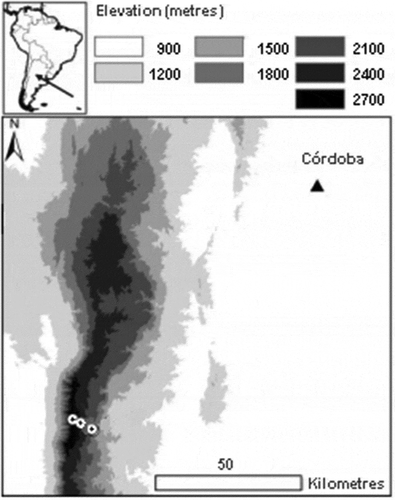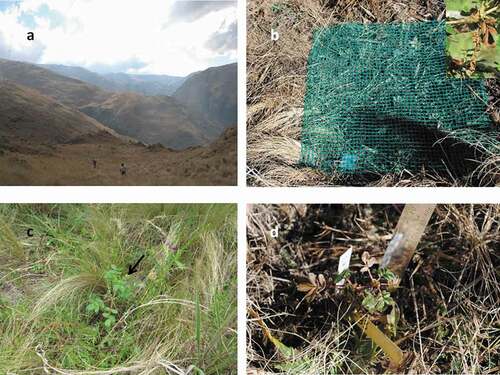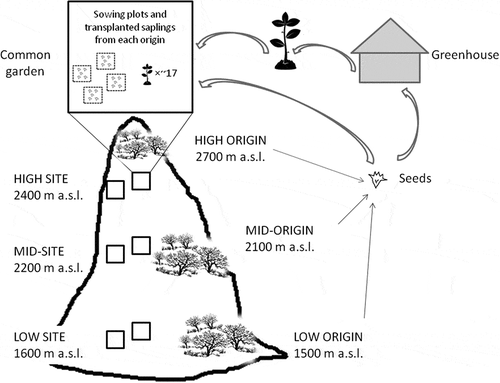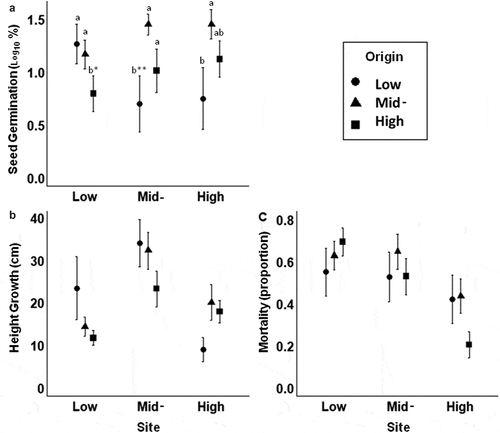Figures & data
Figure 1. Map of the study area. The location of the mountains of central Argentina in South America is shown in the upper left. The elevation belts are of the mountains are shown in grey scales. Circles represent the three elevation sites (at 1600, 2200 and 2400 m a.s.l.). The most important city in the region is indicated

Figure 2. Images of one of the common gardens at the low elevation site (a), sowing plot covered by the net and detail of seeds (b), one Polylepis australis sapling under natural habitat conditions (c), and one sapling in the common garden (d)

Figure 3. Schematic representation of the reciprocal sowing and transplanting experiments. Seeds were collected from established populations at the low, mid- and high elevation belts of Polylepis australis distribution range in the mountains of central Argentina (i.e. low, mid- and high origins). Saplings were produced under greenhouse conditions. Seeds and saplings from all origins were established at three elevation sites (low, mid- and high sites) within two common gardens protected from livestock. At each site, eight sowing plots were distributed in both common gardens. Each sowing plot corresponding to one mother per origin had 500 seeds. Nearly 17 saplings from a variable number of mother plants per origin were established in each common garden

Table 1. Test statistics of the GLMMs performed to assess the effects of site, origin and their interaction on seedling emergence, sapling growth and sapling mortality of three Polylepis australis populations subjected to the reciprocal sowing and transplant experiments. Models with and without mother plant as random factor were compared using the AIC and the likelihood ratio test (LRT), for which P value is provided
Figure 4. Performance of three different origins of Polylepis australis at three sites along an elevation gradient. (a) Seedling emergence, (b) sapling height growth, and (c) sapling mortality. Seeds and saplings were transferred to each site from low (black dots), mid- (grey triangles) and high (light grey squares) origins. Values are mean ± standard error. Different letters indicate significant differences among the local origin and the two foreign populations at each site according to contrasts (*P ≤ 0.05; ** P < 0.001). Letters are not included in growth and mortality figures because there were no significant differences per site (all P > 0.05; see text for details)

Table A1. Summary of response variables after three years of translocation experiments under field conditions. Seeds and saplings of Polylepis australis from three origins across it elevation range of distribution were established at three elevation sites
